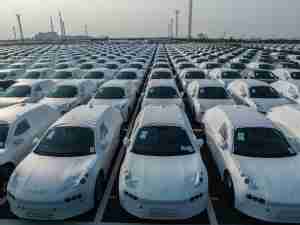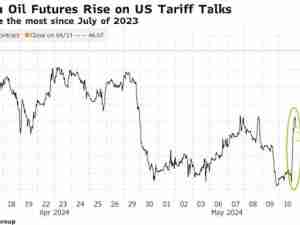U.S. Economy Moving At Same Lukewarm Pace Despite Strong Q2 Showing
posted by AJOT | Aug 11 2014 at 08:44 AM | International Trade
A new economic forecast for the U.S. and California says that despite the strong second quarter growth rate, the U.S. economy is moving at the same mundane pace it has been for the past two years. However, the new forecast by Beacon Economics also says the outlook remains bright, with 2015 expected to have the strongest growth since the very start of the recovery. California’s economy is doing even better than the nation’s with virtually every key economic indicator from GDP to employment to personal income in growth mode—trends that are expected to continue for the next two years.
United States
According to the new forecast, the U.S. economy is expected to grow at slightly more than 3% over the next two quarters, less than the 4% estimated growth in the second quarter. “The second quarter numbers, along with strong employment gains in recent months, have been a relief for many elected officials and have made the economy more of a positive talking point for Democrats rather than a negative one for Republicans,” says Beacon Economics Founding Partner Christopher Thornberg, one of the forecast’s lead authors. “However, although the second quarter did make a decent showing, it wasn’t be enough to make up for weakness seen earlier in the year. Overall growth for 2014 will be slower than last year.”
On the whole, the forecast has 2014 growth averaging out at roughly 2.2% per quarter compared to 3% last year. “The culprit was not the bad weather in the first quarter or housing, but the widening of the trade deficit as there was more demand for imports and less foreign demand for U.S. exports,” says Thornberg. But looking out to 2015, expect annual growth to average in the 3% to 3.5% range, the strongest showing since the initial quarters of the recovery. The improvement will be driven by increased construction and better global economic growth. See more key U.S. findings below.
California
California’s economy will continue to steadily and consistently improve throughout the life of the state forecast in 2019, according to the analysis. Employment growth will settle in at 2.5% by 2016 and the state’s unemployment rate is forecast to drop below 6% by mid 2017 – about half of what it was at its peak in October 2010 (12.4%). Moreover, California’s employment growth has outpaced growth in the nation for 28 consecutive months, as of June 2014. “Every metropolitan area in California has now returned to job growth,” says Jordan Levine, Beacon Economics’ Director of Economic Research and one of the forecast’s lead authors. “Although the jobs and broader economic recovery has been more robust in some areas of the state than in others, the overall numbers are indicative of real, sustained improvement statewide.”
One of the biggest problems facing California is the rapidly rising cost of housing, driven by a lack of new supply, according to the analysis. Ultimately, a lack of housing will put a crimp on the state’s ability to grow. “You can’t add jobs if there is no growth in the labor force because people are leaving because they can’t afford housing,” says Thornberg. Currently, however, there is sufficient slack in the labor market to allow for solid growth for the next couple years.
Additional Key U.S. and California Findings:
The source of the slowdown in U.S. economic growth from 2013 to 2014 has been due to external sources: Two-thirds is directly attributable to a sudden widening of the nation’s trade deficit in the first half of the year.
The forecast expects the drag from trade to be transitory. China, Canada, and Europe all show better signs of growth recently—usually an indication of increased demand for U.S. exports within six months.
The three areas the U.S. forecast identifies as needing improvement in order to move the national economy into above average growth rates are government spending, home construction, and the trade deficit. All three remain well out of line with past levels of activity.
The U.S. forecast has new construction permitting and home sales rising in the second half of 2014, improving distinctly over the first.
Home prices in California are forecast to continue on their upward trajectory over the next two years, although the pace of growth will cool to the 4% to 6% range, a rate more in line with income growth.
Home sales in California are forecast to rise by double-digit percentages in 2015.
California’s budget continues to heal and the improvement is being felt by financially strapped local governments as sales and property tax revenues rise across the state.
Visiting California is as popular as ever. Tourism continues to drive the state’s economy forward with hotel occupancy at 73.4% statewide, 10 percentage points higher than the national average.
According to the analysis, California faces a number of major structural challenges that keep the state’s economy from reaching its full potential. These include hyper-cyclical budgeting, failure to address the state’s substantial long-term pension obligations, housing costs driven in significant part to abuse of the California Environmental Quality Act, and a widening education gap relative to other states.
Technological change will also be a long-term challenge for California, and for all states, according to the analysis. In commercial real estate, for example, traditional relationships between employment and commercial absorption are breaking down as more workers telecommute or work remotely. The job growth that used to propel new commercial construction activity is expected to have a smaller and smaller effect.








